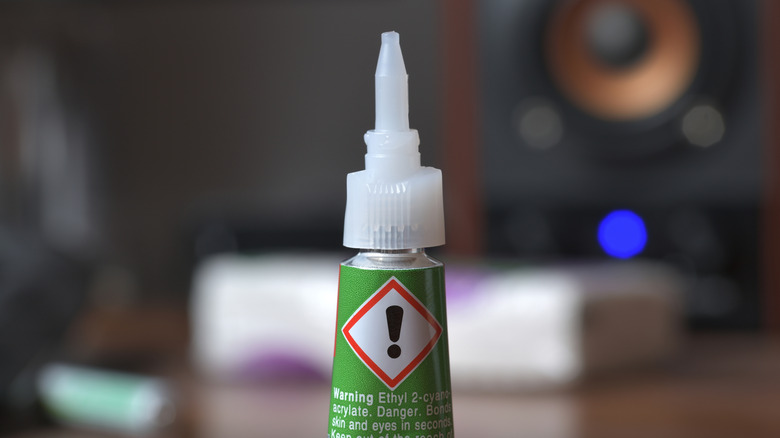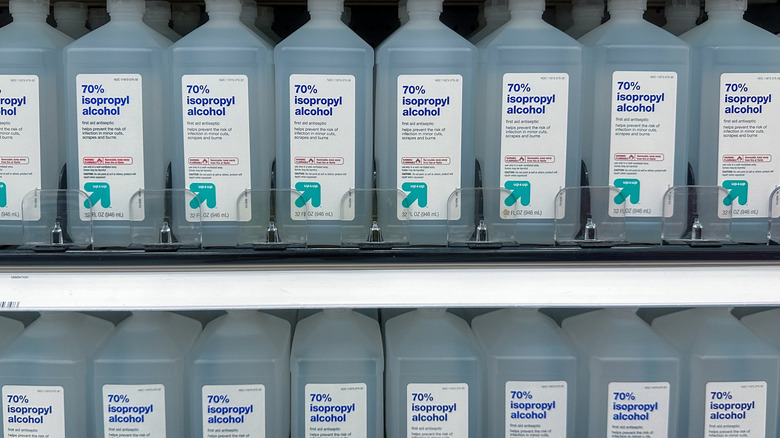Don't Make This Mistake When Trying To Dissolve Super Glue With Acetone
Getting superglue in places you didn't necessarily want it is among the most common mistakes made using when superglue around the house. Luckily, you can easily remove superglue with a number of different household materials, including trusty acetone. But before you reach for this favorite hack, make sure the acetone won't damage what you're trying to clean. While acetone is a miracle worker for breaking down glue — and dissolving it from unwanted places — be wary of the surfaces you apply it to. If your superglue stain is on a plastic surface, for instance, you should rethink using acetone altogether.
Acetone works well to dissolve superglue because it breaks down the molecular bonds found within the adhesive. While this works wonders on different surfaces, when it comes to plastic, acetone can actually dissolve and eat away at the material itself. Some plastics will even loose rigidity, and the color on the plastic's surface can smear. While not all plastics react the same, if your unwanted superglue smudges are on cast acrylic (aka the plexiglass found in things like picture frames, shelving, and home aquariums), PVC (piping and house siding), or polycarbonate (greenhouse siding or even reading glasses), then you should put down the nail polish remover and find an alternative removal method instead.
Alternatives for dissolving super glue
Luckily, there are plenty of other options among your household stash — instead of acetone — that can similarly get any superglue stains or spots off your plastic surfaces. Rubbing alcohol, in particular, can break down superglue without compromising plastic's integrity. For larger patches of glue, soak the spot in diluted vinegar, and then let it sit for several hours. Follow up with rubbing alcohol, blotting the spot with a cotton ball or old toothbrush until the glue breaks down successfully. Then, wipe everything away with a clean, damp cloth.
In lieu of rubbing alcohol, you can also use hydrogen peroxide to easily remove superglue from any surface – including plastic. Hydrogen peroxide neutralizes the adhesive bonds found within glue's structure by oxidizing it. While said oxidization doesn't affect the plastics we mentioned previously, it can affect other materials like neoprene and aluminum.
If you want a more natural way of tackling and dissolving superglue patches, you can try using white vinegar to break down the glue. This may necessitate something more abrasive than a cotton ball, like a paint scraper — in order to pick away at the residue — but it can also offer less chance of damaging your surfaces. Same goes for vegetable, olive, or coconut oil which can be applied straight onto the glue patch and lifted with a paint scraper too. Whichever method works best for you, be sure it won't cause more damage than it's worth!

